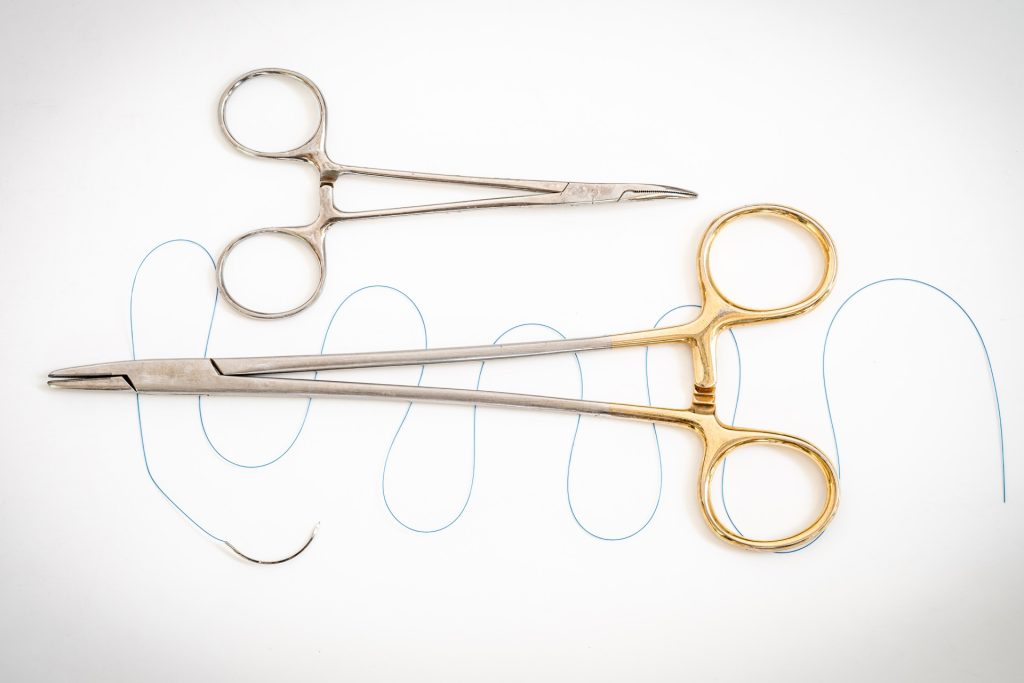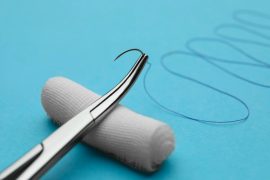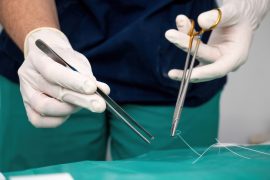What are Absorbable Sutures?
When undergoing surgery, sutures are necessary to close wounds and promote healing. Traditionally, non-absorbable sutures were used, requiring a follow-up appointment to remove them. However, with advancements in medical technology, absorbable sutures have become increasingly popular.
Absorbable sutures are typically made from materials the body can naturally break down. As the body breaks down these materials, they are gradually absorbed and eliminated, leaving behind a healed wound and eliminating the need for removal.
During surgery, the use of absorbable sutures is generally similar to that of non-absorbable sutures. The surgeon will close the wound using the suture, tying it off to ensure proper wound closure.
However, not all absorbable sutures are created equal. Different types of absorbable sutures have varying strengths and breakdown rates, which can impact their effectiveness in wound closure.
Types of Absorbable Sutures
Let’s discuss the different types of absorbable sutures and how they may vary in terms of strength and breakdown rate:
- Polyglactin (Mitsu) Sutures: Polyglactin sutures are popular for wound closure. They have excellent tensile strength and can maintain wound support for up to 42 days. They are made of a synthetic polymer designed to dissolve slowly and get absorbed by the body within 56 to 70 days.
- Catgut Sutures: Catgut suture is a type of absorbable suture made from the sub mucosa of sheep or goat intestines. Traditionally, it has been used for centuries in various surgical procedures, but it is less common today due to the availability of synthetic absorbable sutures. Catgut suture is known for its rapid breakdown rate.
- Poliglecaprone 25 (Filapron) Sutures: Poliglecaprone sutures are a type of absorbable sutures made of a synthetic polymer designed to break down quickly and be absorbed by the body within 90 to 120 days. They have excellent tensile strength and are perfect for procedures requiring Subcutaneous Layer Closure.
- Polydioxanone (Filaxyn) Sutures: Polydioxanone sutures are another synthetic option designed to dissolve slowly over time. They are particularly useful for procedures that require extended wound support, as they can maintain tensile strength for up to 180 days. They are often used in surgeries that involve internal organs or tissues. Filaxyn suture is often used in surgeries that require extended wound support, such as internal organ or Fascia tissue repair.
Benefits of Absorbable Sutures
There are several benefits to using absorbable sutures. Some of them are as follows:
- They are cost-effective and eliminate the need for a second surgery to remove the sutures, thus saving time and reducing the risk of complications.
- Absorbable sutures are also less likely to cause an inflammatory reaction, which can help reduce the risk of infection and promote faster healing.
- They offer excellent tensile strength and can maintain their integrity for an extended period, giving surgeons more time to complete the procedure without the sutures breaking or degrading.
- Absorbable sutures are available in different materials, allowing surgeons to choose the most appropriate type for the specific procedure.
- They are suitable for various surgical procedures, including orthopedic surgery, plastic surgery, and gynecological procedures.
- Lastly, absorbable sutures may reduce scarring as they do not leave behind permanent suture marks.
Recovery and Healing with Absorbable Sutures
After surgery, the healing process with absorbable sutures is generally similar to that with non-absorbable sutures. Patients may experience swelling and pain, which can be managed with medication and other therapies. Additionally, patients may need to follow specific care instructions, such as changing wound dressings or avoiding certain activities that may strain the wound.
Following your surgeon’s post-operative care instructions is essential to ensure proper wound healing. While absorbable sutures eliminate the need for suture removal, they still require proper care to prevent infection and ensure proper healing.
Conclusion
In conclusion, absorbable sutures offer a range of benefits for both surgeons and patients. They eliminate the need for suture removal, reduce infection risk, and improve wound healing outcomes. However, as a patient, it is important to know the type of sutures your surgeon plans to use and what to expect during and after your procedure. By understanding the benefits and limitations of absorbable sutures, you can play an active role in your healthcare and achieve the best possible outcomes.
FAQs
Q: How do absorbable sutures differ from non-absorbable sutures?
A: Absorbable sutures are designed to break down over time and are made from materials that can be naturally absorbed and eliminated by the body. On the other hand, non-absorbable sutures are not intended to be broken down by the body and require removal by a healthcare professional.
Q: How long does it take for absorbable sutures to break down?
A: The breakdown time for absorbable sutures will vary depending on the material type used. Some absorbable sutures may break down within a few weeks, whereas others may take several months.
Q: Do patients need to follow special care instructions after surgery with absorbable sutures?
A: Yes, patients will still need to follow specific care instructions after surgery with absorbable sutures to ensure proper wound healing. This may include changing wound dressings, avoiding certain activities, and taking prescribed medications as directed by their healthcare provider.
Reference links:
- https://www.sciencedirect.com/topics/medicine-and-dentistry/polyglactin#:~:text=This%20suture%20has%20similar%20handling,but%20has%20more%20tensile%20strength.&text=After%20tissue%20placement%2C%20polyglactin%20retains,resorbed%20after%2056%E2%80%9370%20days.
- https://www.healthline.com/health/sutures#types
- https://www.sciencedirect.com/topics/nursing-and-health-professions/catgut-suture
- https://www.vin.com/apputil/content/defaultadv1.aspx?id=7259127&pid=14365&print=1#:~:text=Monocryl%20loses%2070%25%20to%2080,in%2090%20to%20120%20days.
- https://www.ncbi.nlm.nih.gov/pmc/articles/PMC7044756/#:~:text=Complete%20absorption%20of%20PDS%E2%84%A2,at%2014%E2%80%9328%20days%20postimplantation.&text=PDO%20clips%20can%20take%20more%20than%20180%20days%20to%20fully%20degrade.
- https://www.merillife.com/blog/medtech/everything-you-want-to-know-about-absorbable-sutures





Comments are closed.